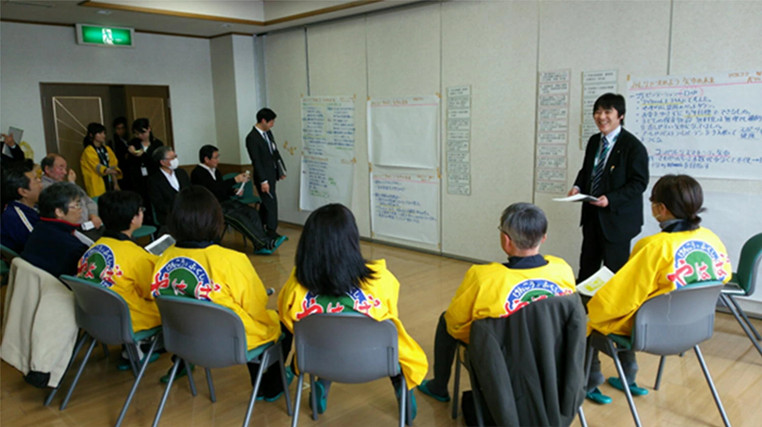
Photo credit: Hara, Keishiro, et al. 2019. CC BY 4.0.
Japan’s Future Design movement offers a unique model for overcoming short-termism in democratic decision-making. Drawing on traditional culture, Future Design is inspired by the principle of seventh-generation decision making, with the aim of strengthening intergenerational justice. Future Design was developed by Tatsuyoshi Saijo, a Japanese economist, who directs the Research Institute for Future Design at Kochi University of Technology.
Future Design is a model of participatory decision-making that was developed to enable residents to discuss and set long-term plans for their towns and cities. In such meetings, two perspectives are adopted: one reflecting the needs and concerns of current residents, and another projecting those of same-aged residents in 2060. To enhance this imaginative leap into the future when adopting the point of view of residents from 2060, participants of this experiential simulation are given ceremonial robes symbolizing a different reality.
The result of this model highlights the power of imagining and experiencing a distant future: studies of this model have revealed that when adopting the perspective of 2060 residents, participants recommend city plans which are significantly more transformative. Bridging this temporal gap enables residents to understand how the decisions they make today impact the lives of future generations. This practice leads current generations to give more weight and empathy to the wellbeing of tomorrow’s generations.
This innovative model has successfully influenced policy planning in a range of towns and cities throughout Japan, including Kyoto, Suita, Uji and Yahaba, leading to the establishment of a Future Strategy Office in Yahaba, integrating Future Design councils into processes involving complex areas of decision making.
Links
For details, please see the Future Design website: www.souken.kochi-tech.ac.jp/seido/index.php.
Additional information can be found in the following paper: https://link.springer.com/article/10.1007/s11625-019-00684-x



